According to reports from Electronic Enthusiasts (by Li Wanwan), on April 15, the Munich Shanghai Electronics Show grandly opened, attracting a large crowd with numerous domestic and international exhibitors. Products such as MCUs, power management chips, power devices, passive components like inductors/capacitors, and sensors were showcased, with AI technology, humanoid robots, and automotive electronics being the major highlights of this year’s exhibition. This article will focus on some of the AI technologies, products, and applications that garnered significant attention at the event.
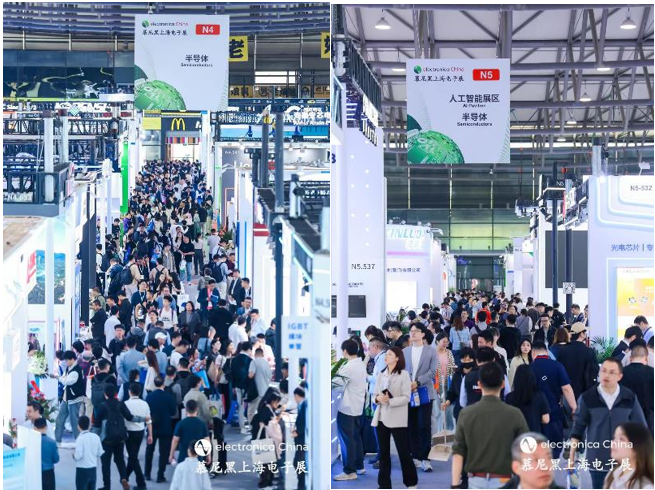
TI: Medical Patches and Vital Sign Monitoring
TI showcased medical patches and vital sign monitoring products, including the TIDA-010288 wearable vital sign monitoring reference design, which enables continuous monitoring of vital signs such as ECG signals, heart rate, respiration, pacing pulses, and temperature. This design utilizes the AFE159RP4 to achieve low power consumption, high resolution, and highly integrated ECG signal acquisition through up to 6 leads (4-channel ADC), respiratory rate, and integrated pacing pulse detection, while using the TMP119 for temperature monitoring. The measured ECG data is processed by the MSPM0 MCU using an Edge-AI hardware accelerator for real-time arrhythmia classification, and the ECG and classification data is transmitted to remote terminals such as smartphones or medical monitoring systems via the CC2340R5 (which supports low-power Bluetooth® (LE) 5.3). The body temperature detection reference design demonstrates how to achieve high-precision body temperature measurement using the CC2340R5 wireless MCU and TMP119 high-precision digital temperature sensor.
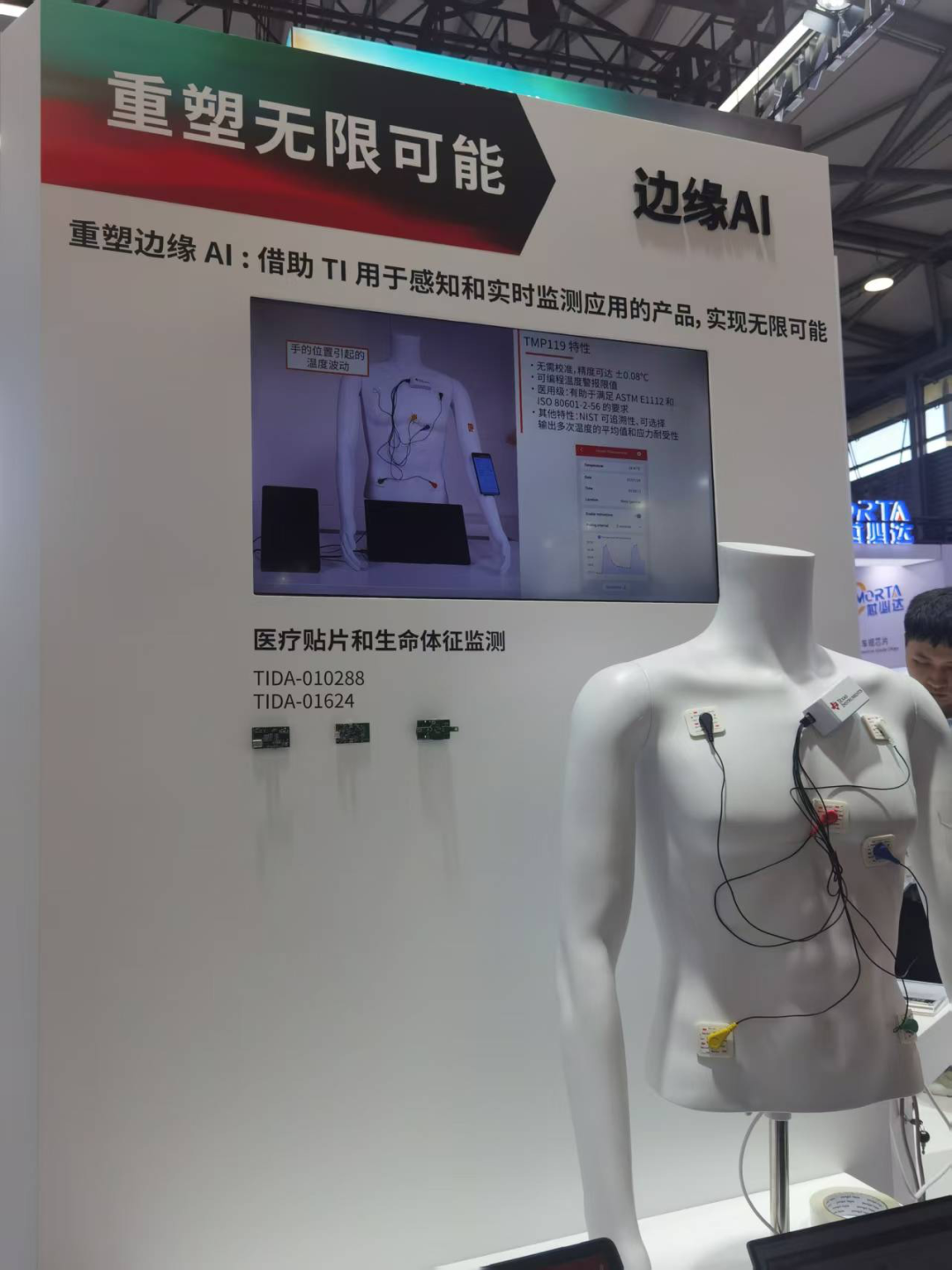
This exhibition also showcased designs in the energy sector, utilizing the TI C2000™ Edge AI solution to achieve more accurate and reliable arc fault detection, with a detection accuracy greater than 98%, compared to about 85% with traditional methods. TI introduced the first on-chip AI accelerator in the TMS320F28P55x, which can achieve 5-10 times lower latency/power consumption compared to traditional software algorithms, making it easier to train and deploy, thus enhancing robustness and adaptability.
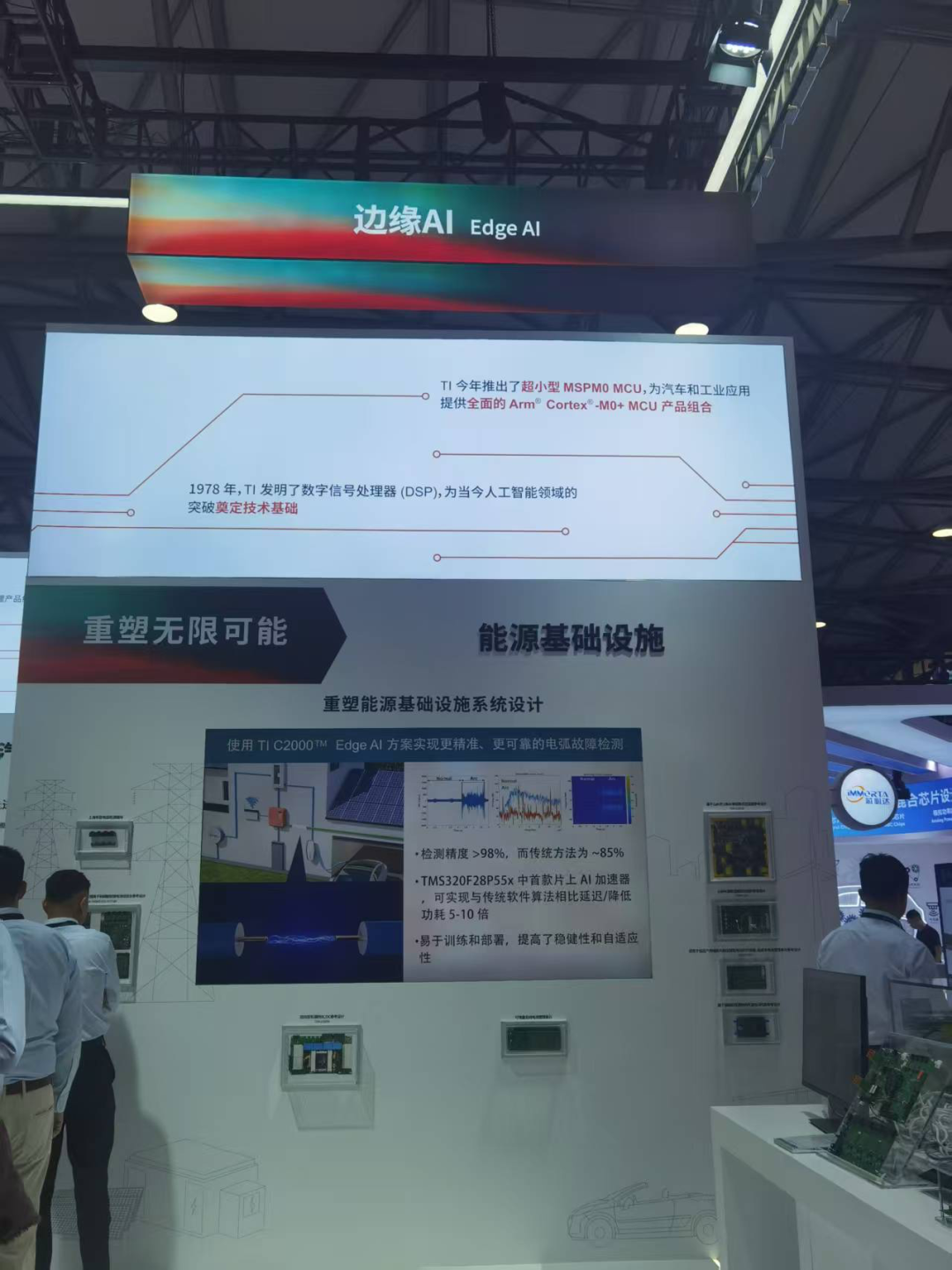
ST: AI Gesture Recognition and Automation Control
ST exhibited a gesture recognition and tracking system based on the STM32N6 and STM32MP257 PLC, which captures hand video in real-time using a camera, employs the Neural-ART accelerator of the STM32N6 for gesture recognition, and implements precise robotic hand control through the PLC solution of the STM32MP257, suitable for industrial applications such as automated assembly and intelligent grasping.
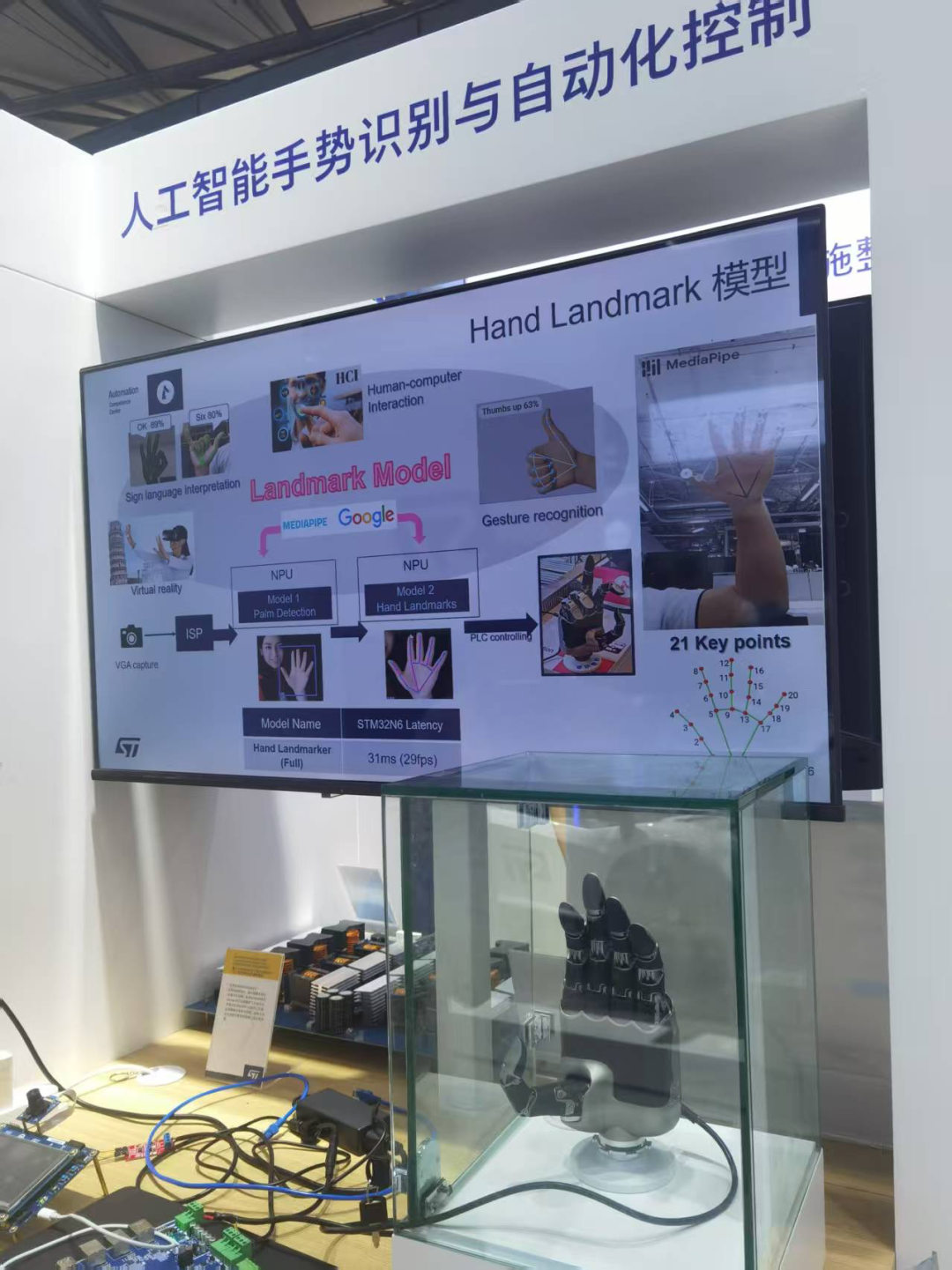
From the overall system framework, it includes perception (21 key points of the hand information (X, Y, Z)), computational integration (data integration and computation by PLC), and execution of target positions for 15 joint motors.
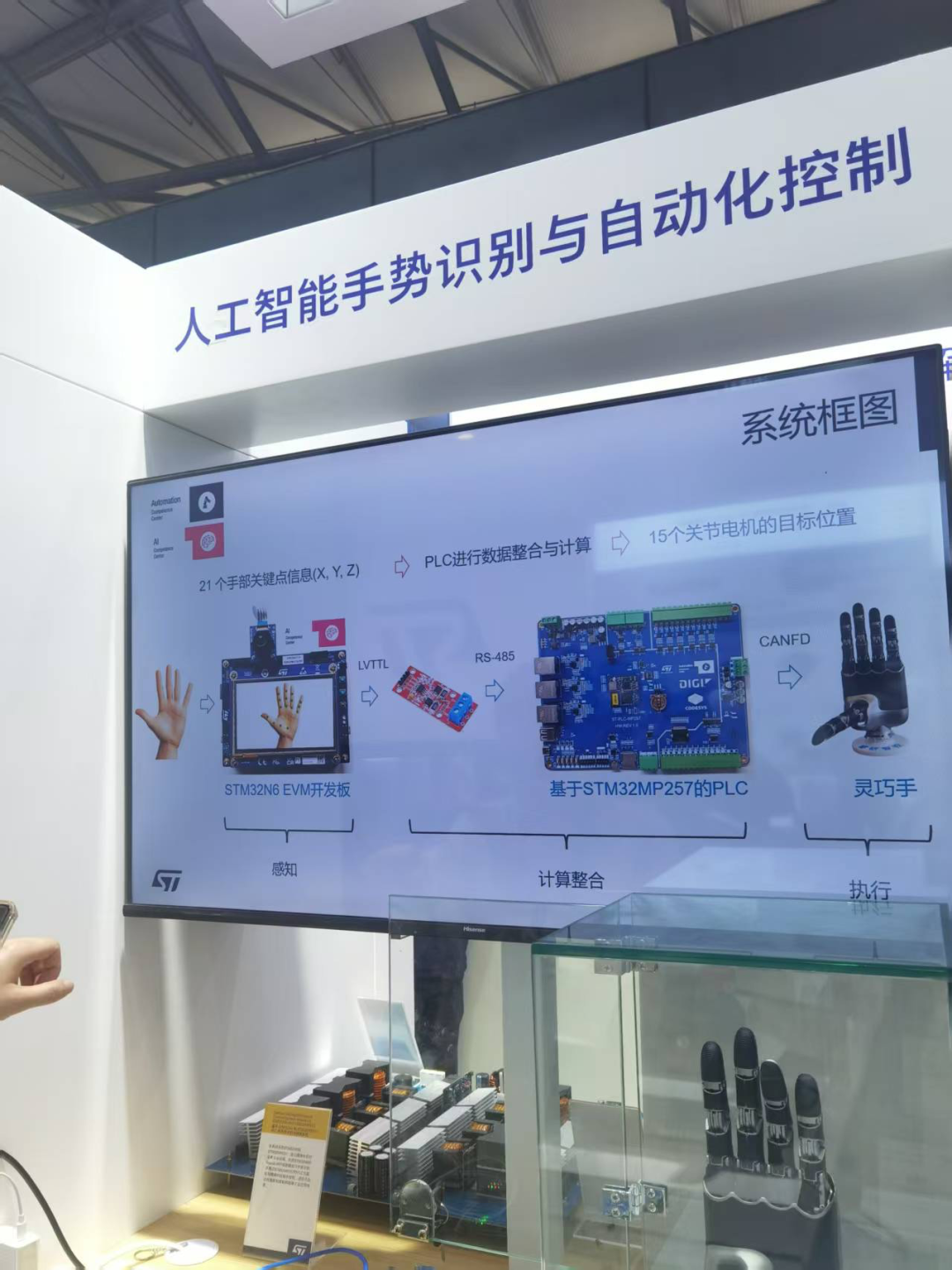
Computer vision in factory automation helps manufacturers improve accuracy, efficiency, and safety by enabling machines to “see” and understand their surroundings. Specific applications include quality inspection (defect detection, size measurement); robotics and automation (guidance systems, grasping and placing); process control (production monitoring, classification, and grading); safety protection (risk detection, compliance testing); enhancing performance, optimizing quality, and reducing costs.
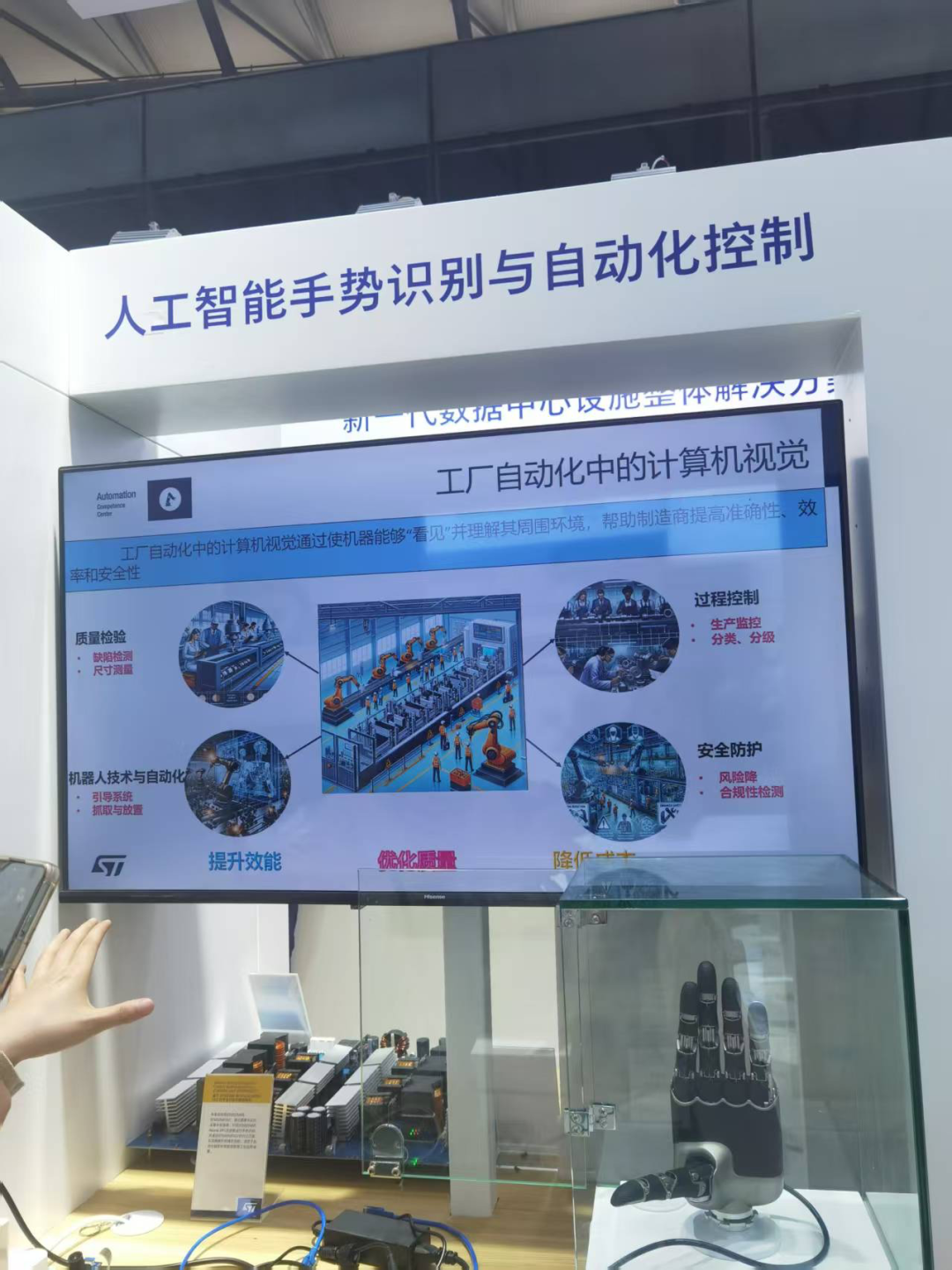
TDK: Spin Memristors for Ultra-Low Power AI Computing
TDK showcased an ultra-low power neuromorphic component spin memristor, which can reduce the energy consumption of AI applications to one percent of that of traditional devices by simulating the efficient energy-saving operating mode of synapses in the human brain, thereby lowering power consumption while achieving immunity to environmental changes and long-term data storage.
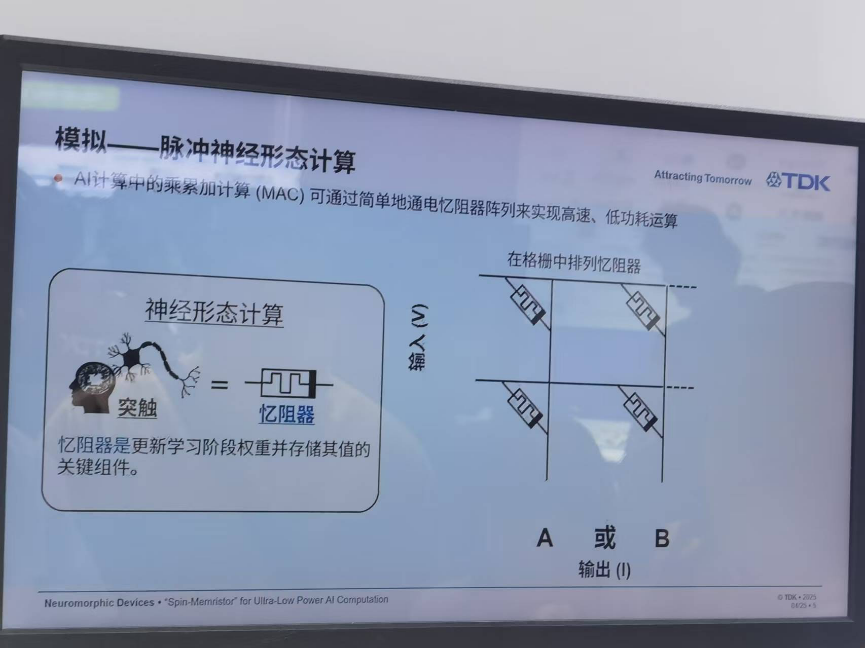
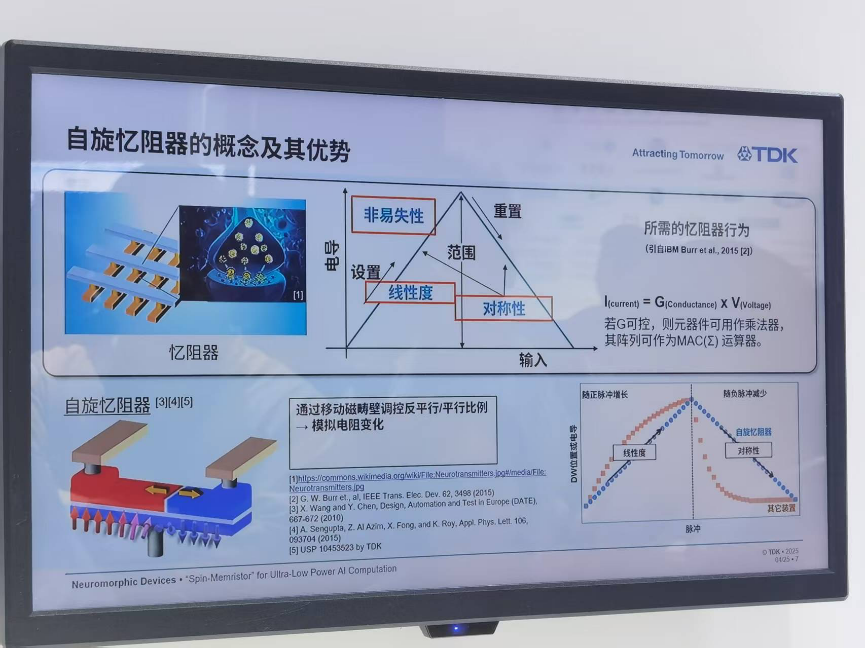
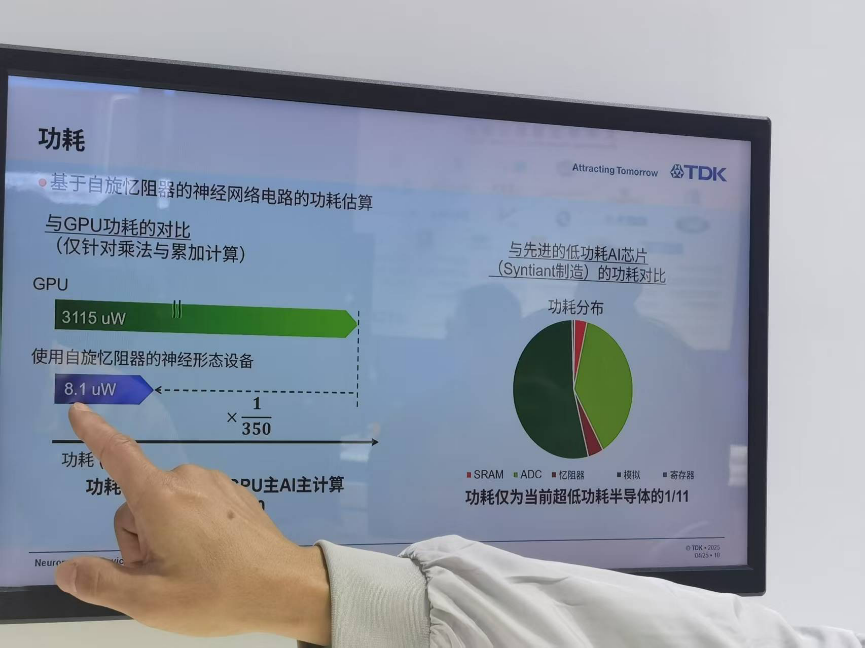
In addition, TDK also showcased its edge-based Condition Monitoring (CbM) solutions, which develop predictive maintenance solutions for Industry 4.0 through edge computing, sensor fusion wireless connectivity, and automated machine learning algorithm training and deployment, widely applicable in industries such as water treatment, chemicals, steel, energy, food processing, manufacturing, and smart logistics, capable of monitoring complex machinery such as generators, compressors, and motors.
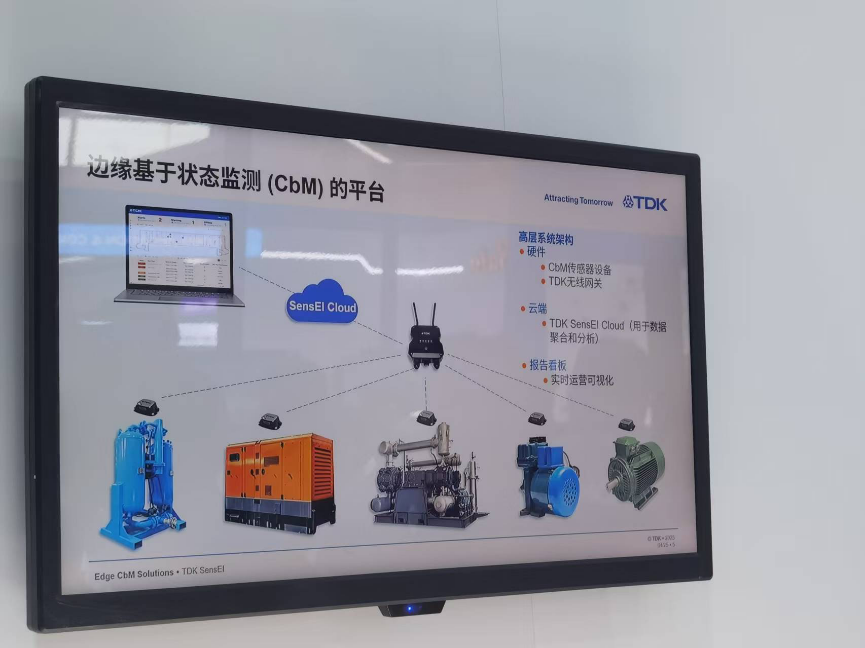
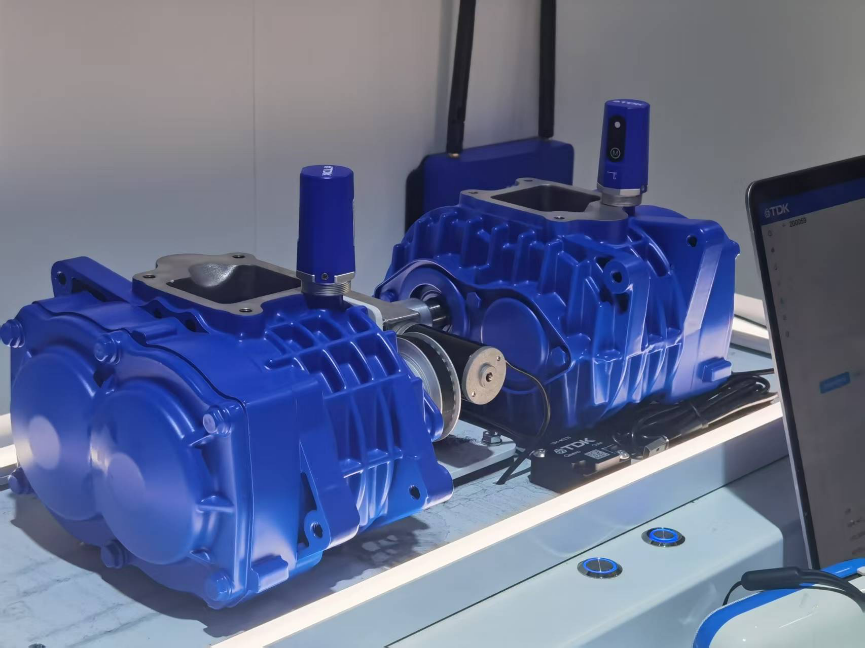
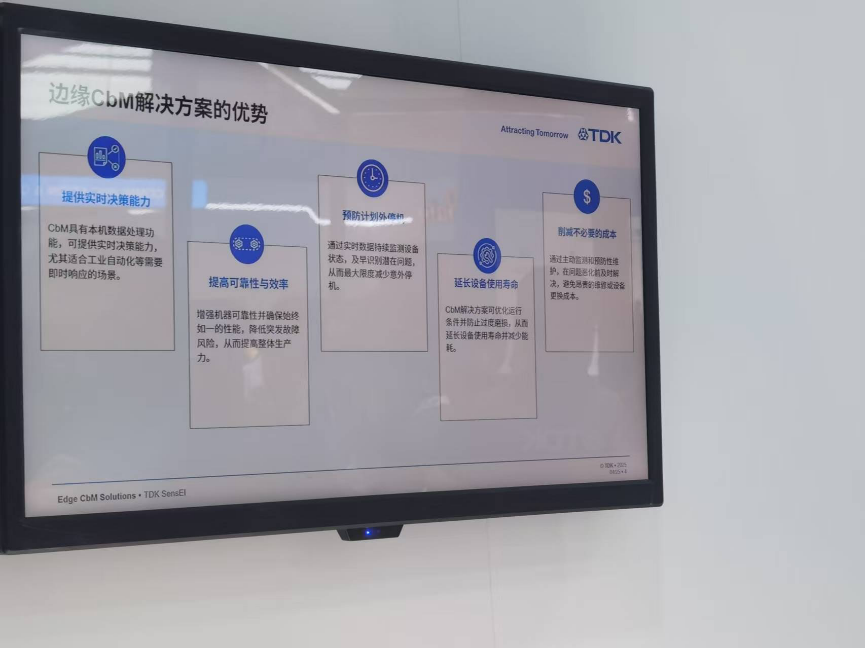
Yanzhi Technology: Edge AI Smart AI-BOX
Hangzhou Yanzhi Technology Co., Ltd. showcased several Edge AI Smart AI-BOX products using different AI processors, with AI computing power ranging from 3 Tops @int8 to 140 Tops @int8. For example, the SA0220-AX650N product uses the Aisense AX650N, with AI computing power of 18/36 Tops; the SAX240-X-MXM uses Intel’s 6th-9th generation Core processors, with AI computing power of 32/64 Tops; the SA0200 uses Rockchip RK3568/RK3576/RK3588/RK3588S processors, with AI computing power of 1/6 Tops; and the SA0220-AL200I uses the Ascend Atlas 200I A2, with AI computing power of 8/20 Tops. Their Edge AI Smart AI-BOX can be applied in smart cities, smart transportation, smart campuses, smart education, smart communities, smart construction sites, smart security, and smart mining.
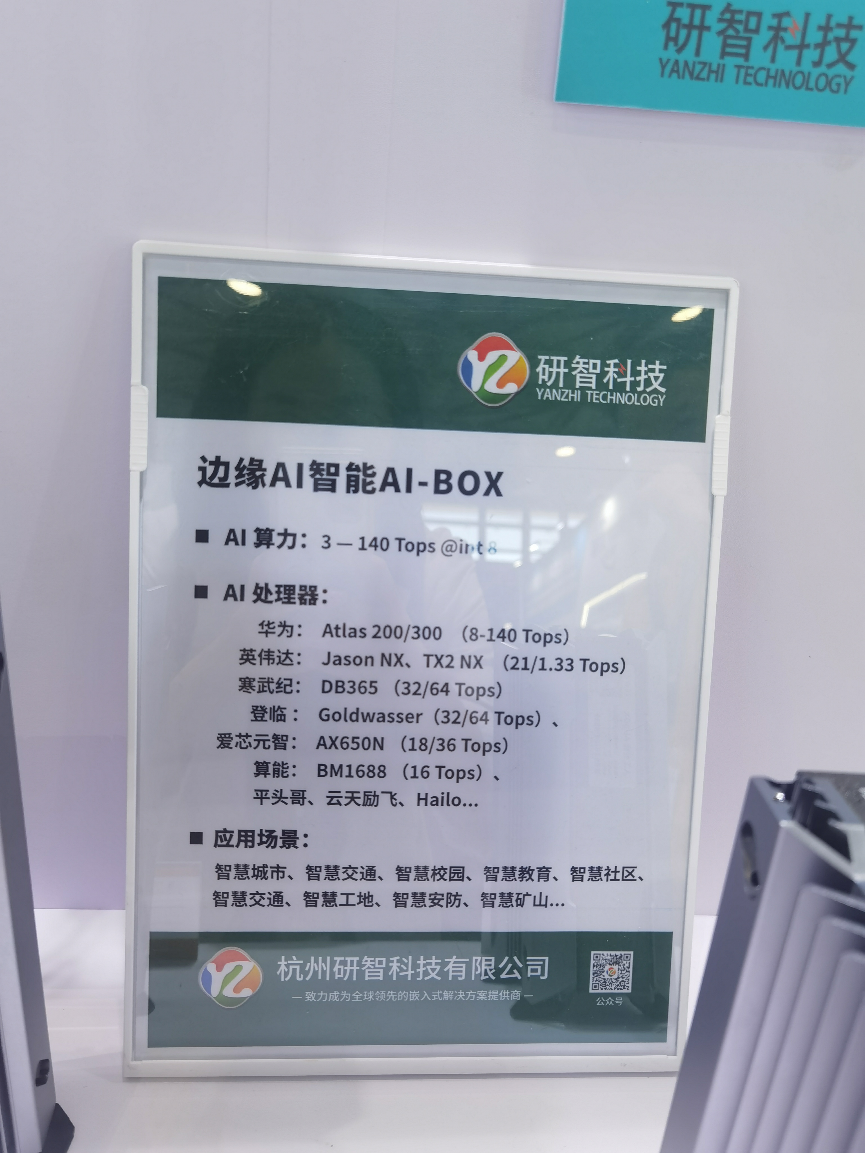
We also welcome attention to the 2025 Innovative Energy Storage Technology Forum and the “Smart Inquiry e-Planet, Creating the Future of Core Chips” video interview, co-hosted by Electronic Enthusiasts and the Munich Shanghai Electronics Show.
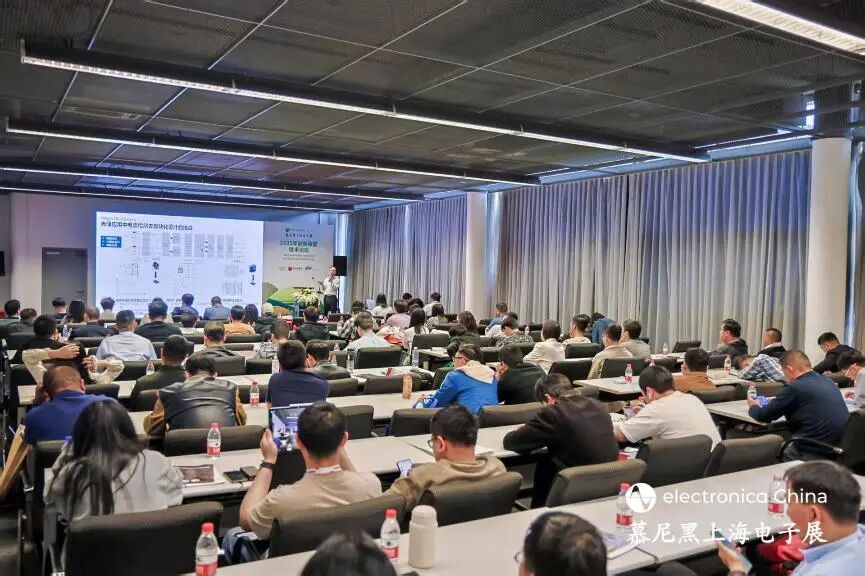
Statement: This article is original from Electronic Enthusiasts, please indicate the source above when reprinting. For group communication, please add WeChat elecfans999, for submission of interview requests, please send an email to [email protected].
More Hot Articles to Read
-
Impact of Tariff Storm on the Storage Industry
-
“Four Calculations in One” Computing Power Platform, Chip Localization Rate Exceeds 90%, Compatible with 8 Types of Domestic AI Chips
-
Made in America iPhone, Cost Doubles? Apple Failed Twice to Build Factories!
-
H20 Ban Reversal! Domestic AI Chips Rise Strongly, Who Will Become the Breakthrough King?
-
America Wields Tariff Club, How Strong is China’s Chip Industry Chain?
Click to Follow and Star Us